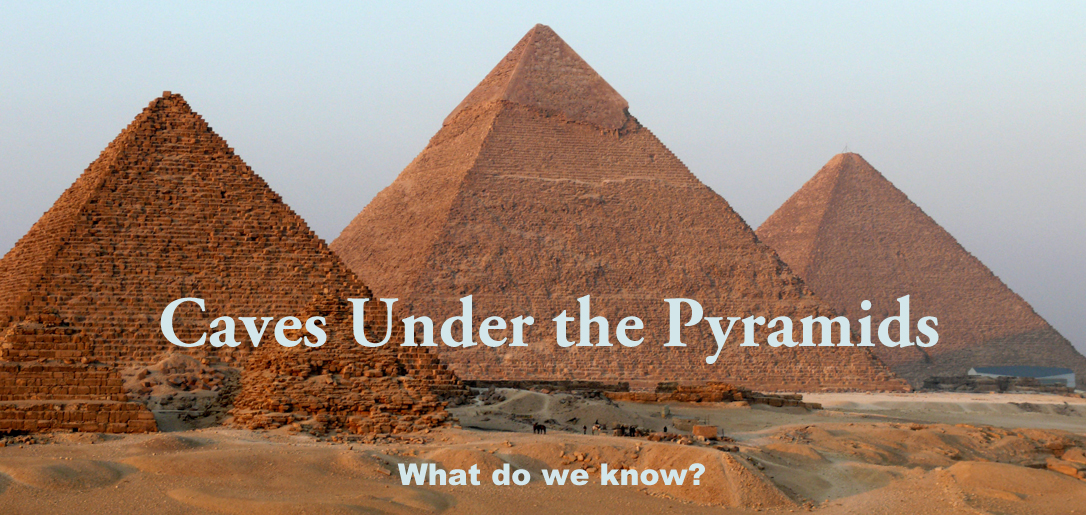

Something extremely strange is happening in Giza, both under the pyramids and in the office of Dr. Hawass. Even skeptics of the "Hall of Records" from Atlantis are now forced to admit that something big is being hidden. It's the perfect set of circumstances for conspiracy theorists.
In August of 2008 a system of caves was discovered under the pyramids. Certainly this is very big news. But look at the reaction of Dr. Hawass on his website:
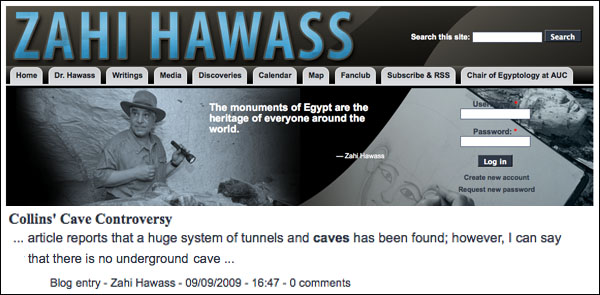
Surely Hawass is intimately aware of such a discovery. So Why deny it? What is he trying to hide? Dies this have anything to do with the wall that is being built to surround the Giza complex? What secrets don't they want us to know?
(Also see UPDATE: Since Arab Spring Uprising)
Inside Giza's cave underworld
In December 2009, after denying that they existed, Egypt's leading Egyptologist, Dr Zahi Hawass, has had to admit that an excavation team under his charge is investigating an ancient tomb at the centre of claims regarding the alleged discovery of a cave underworld beneath the Pyramids of Giza.
This is a surprising announcement for several reasons, not the least being that the "alleged" cave system has already been explored and photographed by British writer and explorer Andrew Collins. In August 2008, Collins announced that he had rediscovered the entrance to a previously unexplored cave system, entered via a mysterious tomb several hundred meters west of the Great Pyramid. Perhaps it was how Collins discovered the cave entrance that has caused the controversy.
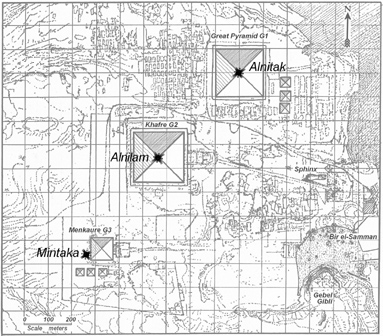
The alignment of the three pyramids with the stars of Orion's belt [above] is not perfect.
Much has been made observation that the three pyramids on the Giza plateau appear slightly mis-aligned. They are not on a straight line. Since we marvel at the mathematical perfection of the early Egyptians, this has bothered investigators. Thus when in 1993 Robert Bauval and Adrian Gilbert in their bestselling book The Orion Mystery saw the three 'belt' stars of Orion as defining the ground-plan of the Giza Pyramids the theory was met with cautious enthusiasm. However, not all were convinced by the "Orion Correlation Theory" (OCT), as it became known.
The alignment wasn't "perfect" but it was close enough for many Egyptologists. But not for Andrew Collins.
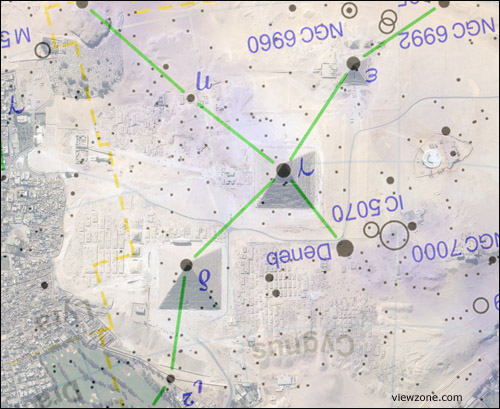
The alignment with the "wings" of Cygnus [above] is perfect.
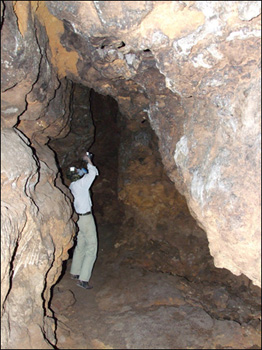 Collins discovered another group of stars in the constellation Cygnus that matched with the same perfection that was the trademark of the Egyptians. By superimposing the stars of Cygnus over the three pyramids he could see that one star, Deneb, was not aligned. Looking where something should be -- a pyramid or temple -- there was nothing. Perhaps time had destroyed it? Perhaps it was buried? Or perhaps it was a sign that something else was under the plateau, waiting to be discovered.
Collins discovered another group of stars in the constellation Cygnus that matched with the same perfection that was the trademark of the Egyptians. By superimposing the stars of Cygnus over the three pyramids he could see that one star, Deneb, was not aligned. Looking where something should be -- a pyramid or temple -- there was nothing. Perhaps time had destroyed it? Perhaps it was buried? Or perhaps it was a sign that something else was under the plateau, waiting to be discovered.
Collins later found clues left in the 200-year-old memoirs of British diplomat and explorer Henry Salt. Salt wrote how, in 1817, he and Italian explorer Giovanni Caviglia had investigated cave "catacombs" at Giza for a distance of "several hundred yards" before coming across a "spacious" chamber. This chamber linked to three others of equal size, from which went various labyrinthine passages, one of which the Italian later explored for a distance of "300 feet further".
Collins decided to look for these caves in the area where the unmarked star of Cygnus would align in relation to the three pyramids. He discovered a series of catacombs, as Henry Salt had described, but no sign of any caves. Then, as he was about to leave the site he noticed a break in the catacomb wall which eventually revealed the entrance to this huge complex network of caves.
Excited by this monumental discovery, Collins immediately went to inform the Egyptian authorities and expected them to be as excited as he was. Wrong!
Why Cygnus x-1 is unusual Several thousand light-years away, near the "heart" of Cygnus, the swan, two stars are locked in a gravitational embrace. One star is a blue supergiant, known as HDE 226868. It is about 30 times as massive as the Sun and 400,000 times brighter. The other star is 5 to 10 times the mass of the Sun, but it's extremely small. The object must be the collapsed core of a star. Its mass is too great to be a white dwarf or a neutron star, though, so it must be a black hole -- the corpse of a star that once resembled the supergiant.
The X-rays come from a disk of gas that's spiraling into the black hole. As the two stars orbit each other once every 5.6 days, the black hole's gravitational pull causes the blue supergiant to "bulge" toward it. In profile, the supergiant would resemble an egg, with the small end aimed at the black hole. But this egg doesn't have a smooth edge. Instead, hot gas flows away from the star toward the black hole. The gas forms a wide, flat accretion disk that encircles the black hole. Friction heats the gas to a billion degrees or more, causing it to emit a torrent of X-rays -- enough to fry any living thing within millions of miles. But the X-ray glow isn't steady. Instead, it flickers, which is one bit of evidence that identifies the dark member of the binary as a black hole. Gas enters the outer edge of the accretion disk then spirals closer to the star. If the center of the disk contained a normal star, or even a superdense neutron star, then the disk would get hotter and brighter all the way in to its center, with the brightest X-rays coming from the middle. Instead, the X-ray glow cuts off well outside the center of the disk. Observations with Hubble Space Telescope reveal that the central region occasionally flares up as blobs of gas break off the inner edge of the disk and spiral into the black hole. These blobs are accelerated to a large fraction of the speed of light, so they circle the black hole hundreds of times per second. This causes the system's X-rays to "flicker." If the blobs of gas were orbiting a larger object, they would not move as fast, so their high-speed revolution is one bit of circumstantial evidence that identifies the dark companion as a black hole. The black hole's strong gravitational field "redshifts" the energy emitted by this gas to longer and longer wavelengths. Eventually, as the gas approaches the event horizon, the redshift becomes so great that the material disappears from view -- just before it spirals into the black hole. |
Egyptian authorities try to hide the cave discovery
According to Collins,
"Dr Hawass [Secretary General for Egypt's Supreme Council of Antiquities] actually denied the existence of the caves. He has done this publicly. Why he has done this is a matter of debate.The most easiest explanation is that the preliminary investigations that he did following our visit to inform him of the discovery of this cave, in April 2008, meant that his people went in the tomb overlooked the entrance, as we did initially."
Fifteen months later, bowing to the inquiries made by the press and Egyptian scholars, Dr Hawass confirmed that he has ordered an all-Egyptian team to explore the tomb at the center of the "controversy". Controversy? How could a discovery on such a scale be controversial?
"We are clearing this system now, and it is a Late Period catacomb, like many others around Egypt," he stated this week. "There is no mystery about it, and there is no connection with esoteric topics. We will publish our results as part of our normal process."
While applauding Dr Hawass's new interest in the site, Collins remains sceptical of his motives. "We knew in August that he had started clearing the tomb," he said. "The excavations began almost immediately after knowledge of the cave discovery hit the internet."
Collins is also unconvinced by Hawass's explanation of what he calls the "catacomb". "Does his use of the term 'system' now suggest that he has found and entered the caves, which he previously denied even existed? he asks.
"My colleagues and I have examined photographic evidence of dynastic catacombs throughout Egypt, and these all appear to be carved by human hands." --Hawass
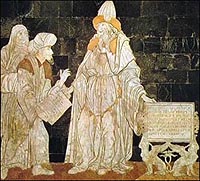 But photographs don't lie. Collins says, "Those at Giza are natural, and penetrate the bedrock for many hundreds of metres, perhaps following the course of local geological faulting."
But photographs don't lie. Collins says, "Those at Giza are natural, and penetrate the bedrock for many hundreds of metres, perhaps following the course of local geological faulting."
Although Dr Hawass suggests there is no mystery surrounding the "catacomb", Collins suspects that the caves extend beneath the Second Pyramid, where ancient tradition puts the legendary Tomb of Hermes [right], Egypt's legendary founder. This is significant because Hermes is known as the Great Wisdom Bringer and Collins suspects that the chambers could possibly reveal something left behind by Hermes -- something like the legendary Hall of Records.
The Hall of Records -- as prophesied by Edgar Cayce?
According to the legendary psychic, Edgar Cayce, the pyramids were constructed by an ancient civilization that had its origins in Atlantis. This great civilization existed somewhere around 10,000 to 11,000 BC and was responsible for building the Great Pyramid, and for burying the lost history of mankind in a chamber called "The Hall of Records."
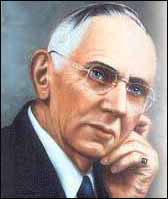
"The records are one... [They contain] "...a record of Atlantis from the beginnings of those periods when the spirit took form or began the encasements in that land." -- CayceThe records extend through the first destructions of that ancient civilization, the exodus of Atlanteans to other lands, and the final destruction of Atlantis. They contain a description of the building of the Great Pyramid, as well as a prophecy of "who, what, where, would come [to make] the opening of the records."
Collins says,
"This has never been found. So perhaps it is still there, awaiting discovery, somewhere close to where Salt and Caviglia reached nearly 200 years ago."I do believe that the caves that we have entered are part of a much larger complex that stretches right beneath the entire Giza plateau."
Collins explains that the network of caves are natural and resemble Swiss Cheese. He believes they were formed long before the pyramids were built and suggests that they could be the reason the pyramids were built on this site. The early civilizations believed that part of the dying process involved traversing the so-called "underworld" and these caves might have been viewed as the entrance to this underworld. There is evidence of human activity in the deepest parts of the caves.
Satellite images help verify the caves
According to Collins, "Satellite images would tend to suggest that the caves... go all the way to the Second Pyramid." A little west of here archaeologists have found a collection of bird mummies. Since the constellation of Cygnus is historically depicted as a bird, specifically a swan, it is theorized that worshippers left mummified birds as an offering associated with this star configuration or perhaps to Socar, the bird-like figure that was the ruler of the underworld.
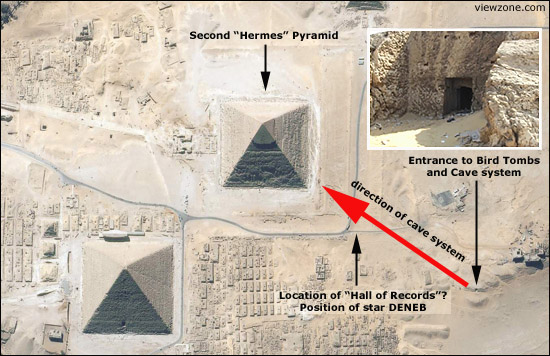
From the entrance of the caves it appears that you can travel towards the Second Pyramid and directly under the spot where the Cygnus star, Deneb, would be aligned with the three pyramids and the wings of Cygnus. Is this where we will find the famed "Hall of Records"? Will the Egyptian government allow the world to know about what's really there? Why are they being so secretive?
What's in the caves
As of February 2010, Dr Zahi Hawass revealed that the system of caves was being probed by a host of experts.
"We have experts in all fields working with us," he revealed this week. "Archaeologists, geologists, engineers, and architects, to name a few... I will be posting information about our excavation at Giza on my web site and will be publishing the results of our work in due course."
Work at the cave-tomb, designated "NC2" by American Egyptologist George A. Reisner, has discovered two new rock-cut shafts and stairways leading into a maze of underground chambers and galleries never seen before in recorded history. Dr Hawass has suggested that they may date to the Old kingdom period. It appears that the caves were originally used as catacombs but leter were used for a bird necropolis, where mummified birds and other small animals were offered as sacrifices.
A British man named Richard Gabriel and his partner Judith was able to gain access to the tomb and cave system and take a sequence of breathtaking pictures. The top 5 photos are from the actual tomb.
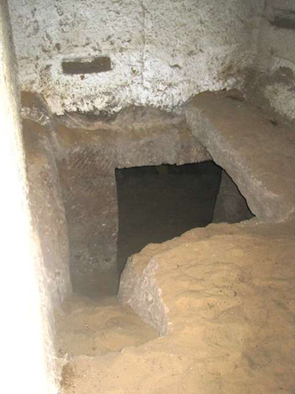
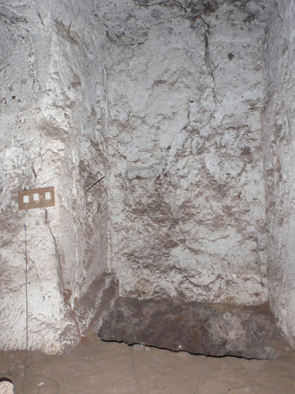
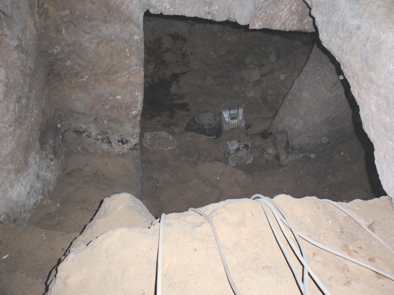
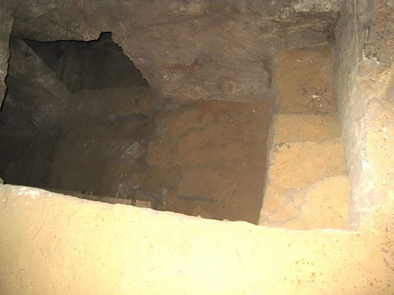
Notice the many electrical cables [above, left] indicating the level of activity currently being undertaken in the caves.
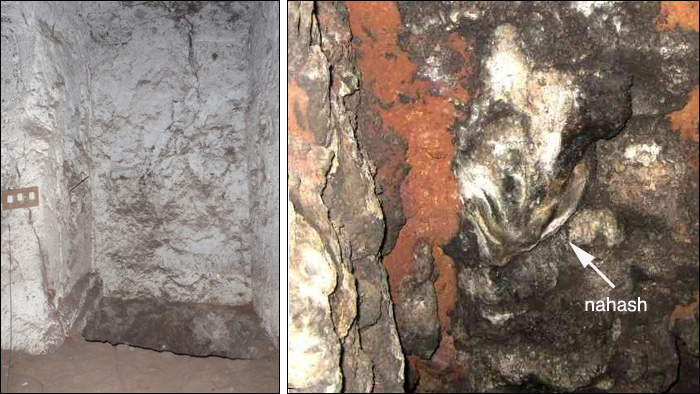
One photo [above, right] displays rock simulacrum in the form of a snake's head, making sense of local folk stories which claim that the caves are haunted by a giant snake called el-Nahash.
What do you think?


From Wikipedia, the free encyclopedia
The serpent (Hebrew:"nachash") occurs in both the Hebrew Bible and the New Testament. The symbol of a serpent or snake played important roles in religious and cultural life of ancient Egypt, Canaan, Mesopotamia and Greece. The serpent was a symbol of evil power and chaos from the underworld as well as a symbol of fertility, life and healing. Nachash, Hebrew for "snake", is also associated with divination, including the verb-form meaning to practice divination or fortune-telling. In the Hebrew Bible, Nachash occurs in the Torah to identify the serpent in Eden. Throughout the Hebrew Bible, it is also used in conjunction with saraph to describe vicious serpents in the wilderness. Tanniyn, a form of dragon-monster, also occurs throughout the Hebrew Bible. In the Book of Exodus, the staffs of Moses and Aaron are turned into serpents, a nachash for Moses, a tanniyn for Aaron. In the New Testament, the Book of Revelation makes use of ancient serpent and the Dragon several times to identify Satan or the Devil. (Rev 12:9; 20:2)
Biblical references
In the oldest story ever written, the Epic of Gilgamesh, Gilgamesh loses the power of immortality, stolen by a snake. The serpent was a widespread figure in the mythology of the Ancient Near East. Ouroboros is an ancient symbol of a serpent eating its own tail that represents the perpetual cyclic renewal of life, the eternal return, and the cycle of life, death and rebirth, leading to immortality.
Archaeologists have uncovered serpent cult objects in Bronze Age strata at several pre-Israelite cities in Canaan: two at Megiddo, one at Gezer, one in the sanctum sanctorum of the Area H temple at Hazor, and two at Shechem. In the surrounding region, a late Bronze Age Hittite shrine in northern Syria contained a bronze statue of a god holding a serpent in one hand and a staff in the other. In sixth-century Babylon, a pair of bronze serpents flanked each of the four doorways of the temple of Esagila. At the Babylonian New Year festival, the priest was to commission from a woodworker, a metalworker and a goldsmith two images one of which "shall hold in its left hand a snake of cedar, raising its right [hand] to the god Nabu". At the tell of Tepe Gawra, at least seventeen Early Bronze Age Assyrian bronze serpents were recovered. The Sumerian fertility god Ningizzida was sometimes depicted as a serpent with a human head, eventually becoming a god of healing and magic.
Nahash in Eden
The Hebrew word nahash is used to identify the serpent that appears in Genesis 3:1, in the Garden of Eden. In Genesis, the serpent is portrayed as a deceptive creature or trickster, who promotes as good what God had forbidden, and shows particular cunning in its deception. (cf. Gen. 3:4-5 and 3:22) The serpent has the ability to speak and to reason: "Now the serpent was more subtle than any beast of the field which the Lord God had made" (Gen. 3:1). There is no indication in the Book of Genesis that the serpent was a deity in its own right, although it is one of only two cases of animals that talk in the Pentateuch (Balaam's donkey being the other).
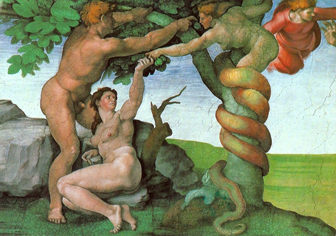
God placed Adam in the Garden to tend it and warned Adam not to eat the fruit of the Tree of Knowledge of Good and Evil, "for in the day that thou eatest thereof thou shalt surely die." The serpent tempts Eve to eat of the Tree, but Eve tells the serpent what God had said (Genesis 3:3). The serpent replied that she would not surely die (Genesis 3:4) and that if she eats the fruit of the tree "then your eyes shall be opened, and ye shall be as gods, knowing good and evil." (Genesis 3:5) Eve ate the fruit and gave it to Adam and he also ate. God, who was walking in the Garden, finds out and to prevent Adam and Eve from eating the fruit of the Tree of Life and living forever, they are banished from the Garden and God posts an angelic guard. The snake is punished for its role in their fall by being made to crawl on its belly in the dust.
Debate about the serpent in Eden is whether it should be viewed figuratively or as a literal animal. According to the Rabbinical tradition, the serpent represents sexual desire. Voltaire, drawing on Socinian influences, wrote: "It was so decidedly a real serpent, that all its species, which had before walked on their feet, were condemned to crawl on their bellies. No serpent, no animal of any kind, is called Satan, or Belzebub, or Devil, in the Pentateuch."
20th century scholars such as W. O. E. Oesterley (1921) were cognisant of the differences between the role of the Edenic serpent in the Hebrew Bible and any connection with "ancient serpent" in the New Testament. Modern historiographers of Satan such as Henry Ansgar Kelly (2006) and Wray and Mobley (2007) speak of the "evolution of Satan", or "development of Satan".
Comments:
Hawass is bought and paid for.
JT
Good article. Some other facts you might want to know... In his lectures, Collins states that Cygnus is a powerful source not only of x-rays but of gamma radiation and cosmic rays which make it all the way to the surface of Earth and even penetrate deep inside caves. He suggests that these rays can be observed as flashes of light when a person is in total darkness and when one of the particles strikes the retina. Apparently miners and even astronauts have experienced this. H also suggests that the effects of this radiation can alter genetic material in subtle ways that can take generations to show up and that this single constellation could be responsible for evolution. So Cygnus is no small constellation and certainly is much more significant to humanity than Orion.
Barbara H.
I, think that Hawas just like many other people in power won't tell us anything.
My oppinion and recommendation we should go there with a Group of openminded people and make them tell us or find out our selfs.
As soon as a goverment body comes along, were surtain to hear, see, and nothing and they will keep us in the dark, afraid to lose control.
Our history is not as they have thought us.. its all before our eyes to see, and for those who are willing to accept.
I hope this discovery will give us the means to really become aware globaly.
With kind regards,
H. van Poelgeest

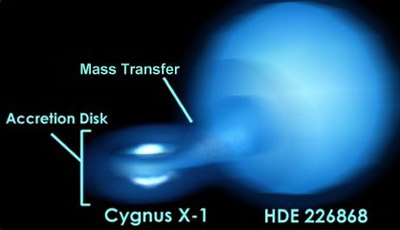 The system is called Cygnus X-1, indicating it was the first source of X-rays discovered in the constellation Cygnus. Discovered by the Uhuru X-ray satellite in the early 1970s, it was also one of the first suspected black holes.
The system is called Cygnus X-1, indicating it was the first source of X-rays discovered in the constellation Cygnus. Discovered by the Uhuru X-ray satellite in the early 1970s, it was also one of the first suspected black holes.